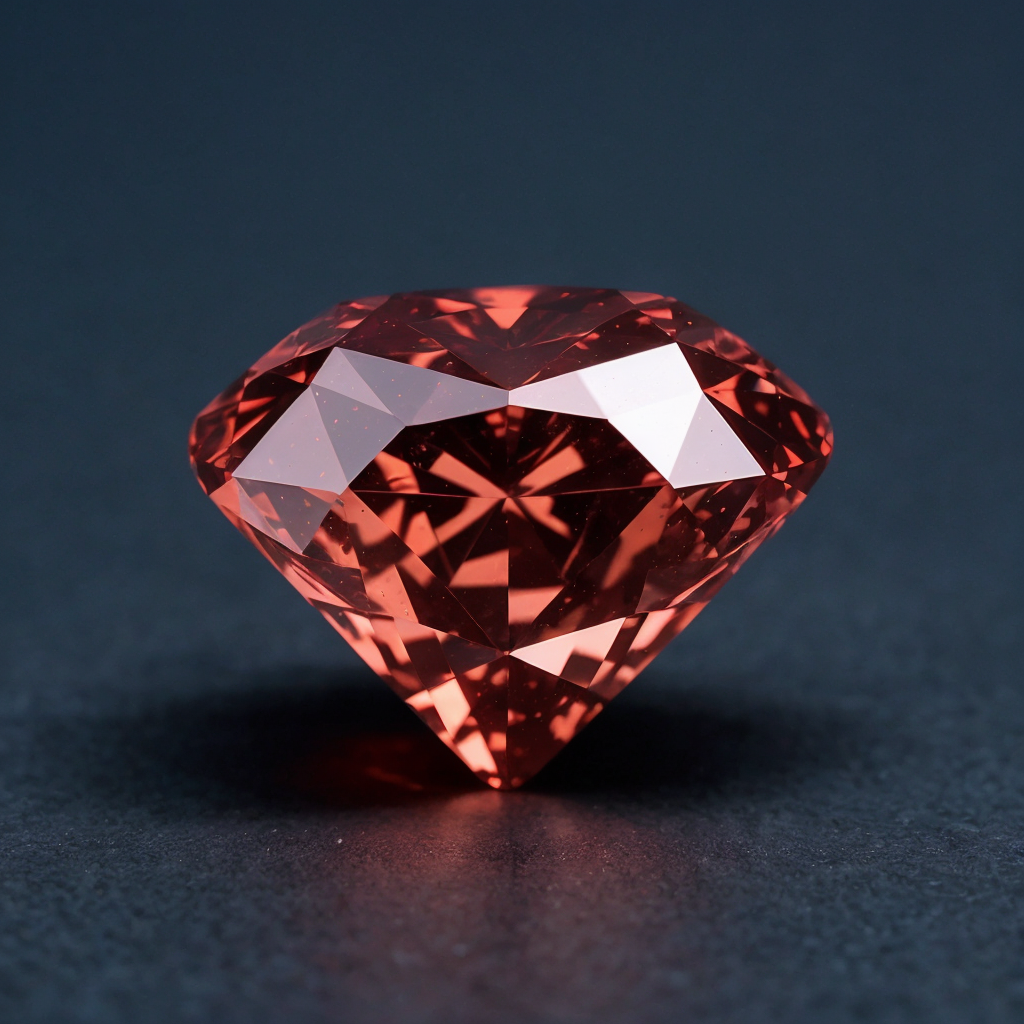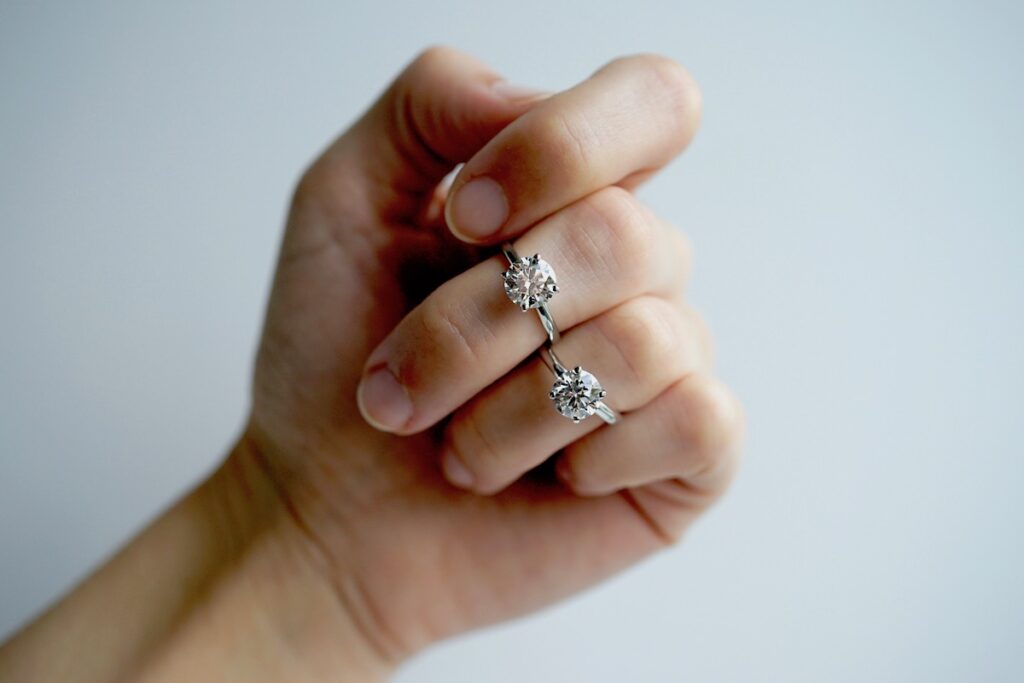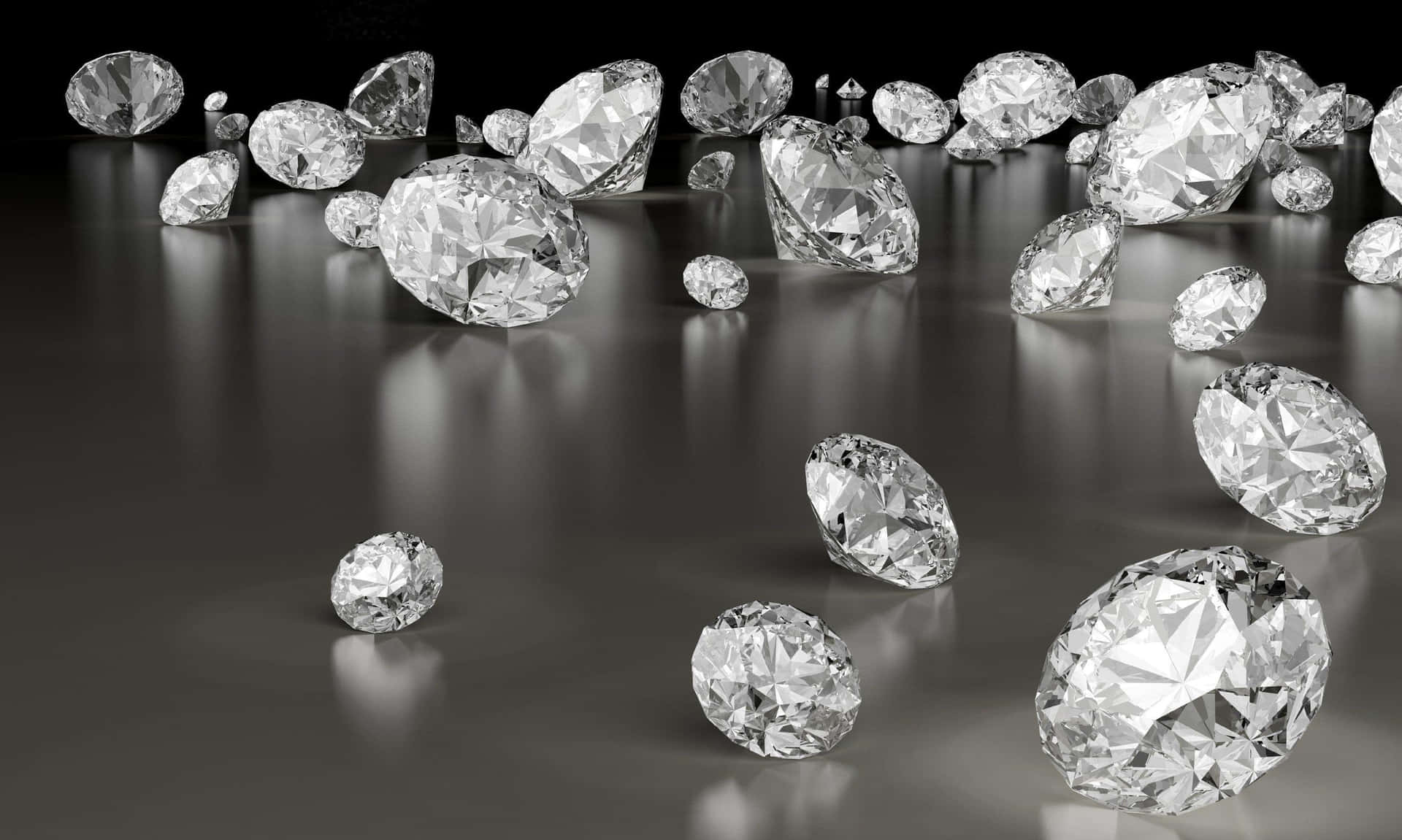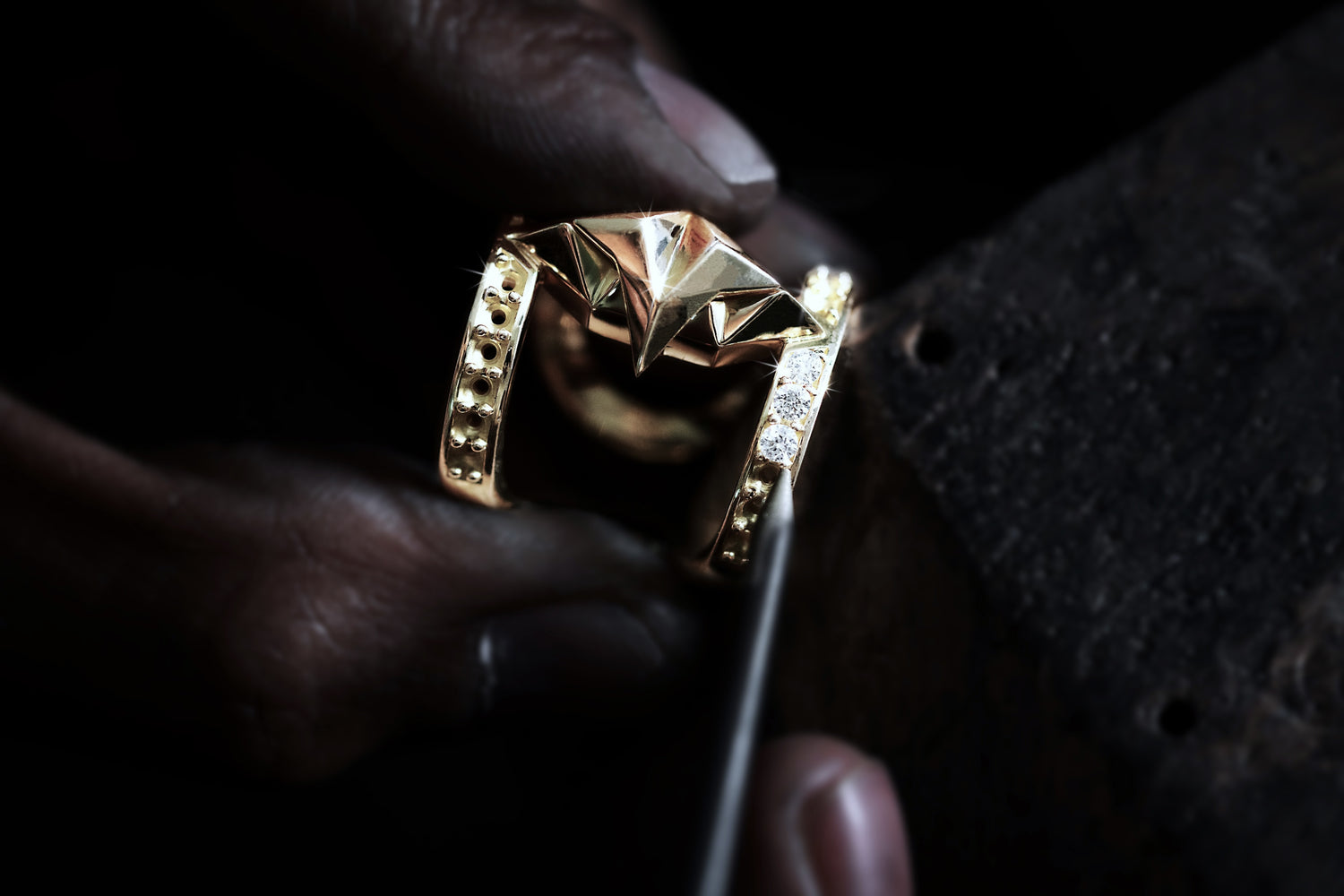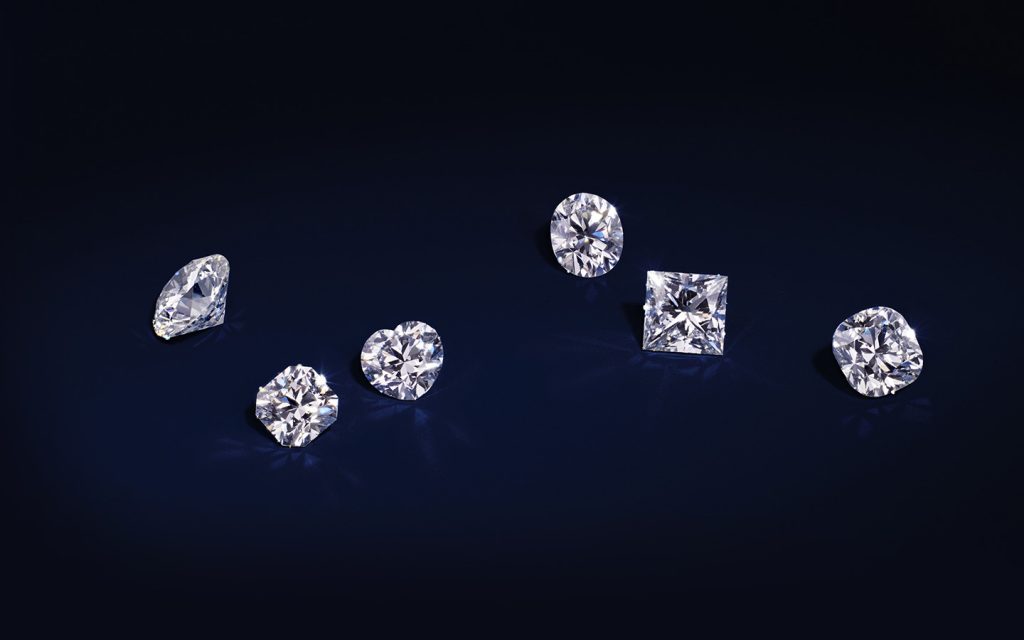Table of Contents
Introduction: The Importance of Diamond Shape in Jewelry
When it comes to buying diamonds, the shape is one of the most important factors to consider. It influences not just the appearance but also the overall appeal of the diamond. Whether you’re shopping for an engagement ring, a pendant, or a pair of earrings, the diamond shape you choose will have a major impact on how your piece of jewelry looks. But what exactly does the “shape” of a diamond mean, and how does it differ from other aspects like cut and clarity?
In this guide, we’ll explore the various diamond shapes available, their characteristics, and how to choose the perfect one for your jewelry. From classic cuts like the round brilliant to less traditional options like heart and marquise, we’ll help you navigate through the options to find the diamond shape that best suits your style and preferences.
What Are Diamond Shapes?
The term “diamond shape” refers to the geometric outline or silhouette of the diamond when viewed from above. It’s often confused with “cut,” but while the cut refers to how a diamond is shaped and faceted to maximize its brilliance and sparkle, the shape is the diamond’s overall appearance, like round, square, oval, etc.
Diamond shapes are the first visual element you’ll notice when you look at a diamond, and they can dramatically change how the diamond looks and how it fits into various jewelry settings.
Understanding the Difference Between Cut and Shape
While “cut” and “shape” are related, they are not the same thing. The “cut” of a diamond refers to how well the diamond has been shaped and faceted, affecting its brilliance and sparkle. A diamond’s cut includes aspects like symmetry, proportions, and how the facets reflect light.
On the other hand, the “shape” of a diamond refers to the overall appearance when viewed from the top. It’s more about the silhouette than how well the stone has been crafted. The shape you choose will depend on personal preferences, style, and the setting of the jewelry piece.
The Most Popular Diamond Shapes
There are many different diamond shapes, each offering a unique look and feel. Let’s take a closer look at some of the most popular and widely loved diamond shapes.
Round Brilliant Cut
The round brilliant cut is the most popular and classic diamond shape, known for its exceptional sparkle and brilliance. This shape is designed with 58 facets that reflect light in a way that maximizes the diamond’s shine. Round diamonds are highly versatile and work in almost any jewelry setting, making them ideal for engagement rings, necklaces, earrings, and more.
Princess Cut
The princess cut is a modern, square-shaped diamond with pointed corners. It’s a favorite among those who want a combination of the brilliance of a round cut with the boldness of a square shape. Princess-cut diamonds are very versatile, and they look stunning in both solitaire and multi-stone settings.
Cushion Cut
The cushion cut combines a square or rectangular shape with rounded corners, creating a “pillow” or cushion-like appearance. This shape has been around for centuries and offers a vintage, romantic feel. Cushion cuts have large facets that tend to emphasize clarity, and they can sometimes have a softer, warmer look compared to other cuts.
Emerald Cut
The emerald cut is a rectangular shape with long, straight facets, often called “step cuts.” This shape is known for its elegance and unique, hall-of-mirrors effect, which gives it a sophisticated, vintage look. Emerald-cut diamonds show off clarity more than other shapes because they have fewer facets, making them ideal for stones with excellent clarity.
Asscher Cut
The Asscher cut is similar to the emerald cut but square in shape, with deeper corners and a more dramatic step-cut pattern. It has an Art Deco feel and is known for its beautiful symmetry. Asscher-cut diamonds can appear larger than other shapes of the same carat weight, making them an appealing option for those seeking a bold, yet timeless look.
Radiant Cut
The radiant cut combines the brilliance of a round cut with the shape of an emerald cut. It has cropped corners and a rectangular or square shape, offering a unique sparkle and an eye-catching, bold appearance. Radiant diamonds are often used in engagement rings and are especially good for those looking for something modern with lots of fire and sparkle.
Oval Cut
Oval-cut diamonds are similar to round diamonds but elongated, giving them a unique, elegant look. This shape can make a diamond appear larger than it actually is, and the elongated form can help fingers look more slender. Oval diamonds are great for those who like the sparkle of a round diamond but want something a bit different.
Pear Cut
The pear cut, or “teardrop” shape, combines the brilliance of a round cut with the elegance of a marquise. It has a rounded end and a pointed tip, creating a unique silhouette. Pear-cut diamonds are often set in pendants or earrings but can also be used in engagement rings for a distinctive, elegant look.
Marquise Cut
The marquise cut is an elongated diamond with pointed ends. Its unique shape is designed to maximize carat weight, making it look larger than other diamonds of the same carat size. Marquise diamonds are often used in vintage or antique-style jewelry and can make a dramatic statement, especially in engagement rings.
Heart Cut
The heart-shaped diamond is the ultimate symbol of love and romance. This shape is a variation of the round brilliant cut, with a cleft at the top and a rounded bottom that forms the heart shape. Heart man made diamonds are ideal for those seeking a sentimental and romantic piece of jewelry, often used in engagement rings and necklaces.
Factors to Consider When Choosing a Diamond Shape
Choosing the right diamond shape can be a personal decision, and it’s important to consider various factors to ensure that the diamond you choose aligns with your style, preferences, and the type of jewelry you’re buying.
Personal Style and Preferences
Your personal style plays a huge role in selecting the right diamond shape. Do you prefer a classic, timeless look? Then a round brilliant or princess cut might be right for you. If you’re more inclined towards vintage or unique designs, you might want to explore shapes like the cushion, emerald, or Asscher cut.
Ring Setting Compatibility
The diamond shape you choose will also affect the setting of your jewelry. For example, round diamonds work beautifully in almost any setting, from solitaire to halo, while certain shapes like oval or marquise may look best in more elaborate settings with side stones.
Finger Shape and Size
The shape of your fingers can also influence the diamond shape you choose. For example, elongated shapes like oval and marquise can make short fingers appear longer and more slender, while round or square diamonds can provide balance to longer fingers.
Budget and Carat Size
The shape of a diamond can also impact its price and how much carat weight it appears to have. For instance, round brilliant diamonds tend to cost more due to the cutting process, while shapes like the oval or emerald cut can offer better value, as they appear larger for the same carat weight.
How Diamond Shape Affects the Appearance of the Stone
The shape of the diamond doesn’t just affect how it looks visually; it can also impact how light interacts with the stone, affecting its brilliance and size perception.
Brilliance and Sparkle
Different diamond shapes have varying levels of brilliance. Round brilliant diamonds have the most sparkle because of their 58 facets, while other shapes like the emerald or Asscher cut have fewer facets and a more subdued sparkle, showcasing the stone’s clarity and depth instead.
Size Perception
Certain shapes, like the oval and marquise cuts, can make the diamond appear larger than other shapes of the same carat size. If you’re looking for a diamond that appears bigger without spending more, these shapes are great options.
Shape and Light Reflection
The way light reflects off a diamond depends on its shape and cut. Brilliant-cut diamonds, such as round and princess cuts, are designed to reflect as much light as possible. Other shapes, like the emerald or Asscher cuts, feature step facets that create a different light effect, often described as a “hall-of-mirrors” effect.
Less Common Diamond Shapes
In addition to the most popular diamond shapes, there are several less common options that offer a unique flair for those looking for something different.
Trilliant Cut
The trilliant cut is a triangular-shaped diamond, offering bold, geometric lines and plenty of sparkle. This shape is often used as side stones in three-stone rings but can also work well as the center stone in a ring for a distinctive, modern look.
Baguette Cut
Baguette diamonds are rectangular or tapered stones, often used as accent stones rather than centerpieces. Their long, clean lines offer a sleek, sophisticated look, making them ideal for modern or vintage-style rings.
Tapered Baguette Cut
Tapered baguette cuts are a variation of the baguette shape with one end narrower than the other. They’re often used as side stones to complement a larger center stone, adding elegance and balance to the overall design.
Diamond Shapes for Different Occasions
Whether you’re looking for an engagement ring, a pair of earrings, or a necklace, certain diamond shapes are better suited to specific occasions.
Engagement Rings
Engagement rings are one of the most popular places for diamonds, and the shape you choose can say a lot about your personality. Round, princess, and oval diamonds are classic choices for engagement rings, while more unique shapes like cushion and emerald can be perfect for a vintage-inspired look.
Wedding Bands
For wedding bands, diamonds are often used as accent stones rather than the center piece. Shapes like the round brilliant, baguette, and channel-cut diamonds work well in these settings, as they complement the band’s design without overwhelming the overall look.
Necklaces and Earrings
Diamonds for necklaces and earrings often come in various shapes, with round, oval, and heart cuts being popular choices for pendants. For earrings, the round, princess, or even the marquise shape works well, adding a touch of sophistication and elegance.
How to Care for Diamonds Based on Shape
Caring for your diamonds based on their shape is important to maintain their beauty and longevity. Each shape requires different care, so it’s important to know how to properly clean and store your diamond jewelry.
Cleaning Tips for Different Diamond Shapes
While all diamonds should be cleaned regularly, some shapes, like the princess and cushion cuts, can trap dirt in their corners and crevices, requiring a more thorough cleaning. Use a soft brush and mild soap to clean your diamond and remove any built-up grime.
Storage Tips
Store your diamonds in individual pouches or boxes to prevent them from scratching against other stones. Certain shapes, like marquise or pear cuts, have pointed tips that can be vulnerable to damage, so extra care is necessary.
Conclusion: Choosing the Right Diamond Shape for You
Choosing the right diamond shape is a highly personal decision that involves considering factors like style, occasion, and budget. Whether you’re drawn to the classic brilliance of a round cut or the elegant simplicity of an emerald, the perfect shape is out there waiting for you. By considering the factors we’ve discussed in this guide, you can confidently select a diamond shape that will shine in any piece of jewelry you wear.


